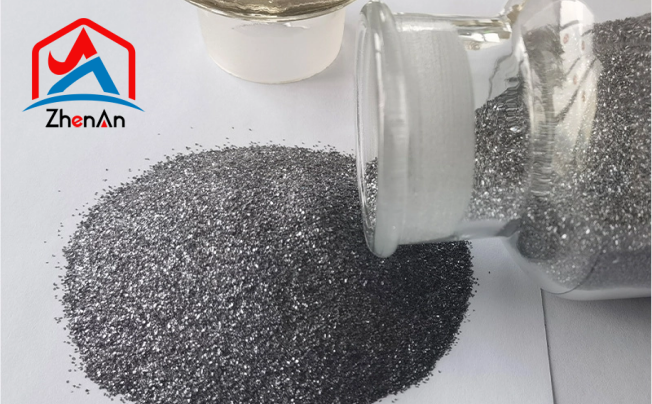BY  GENN
GENN
2024/10
Blog
Is Silicon Dioxide A Neurotoxin?
Neurotoxins, by definition, are substances that have the potential to cause damage to the nervous system. This encompasses a wide range of compounds, from heavy metals and pesticides to certain naturally occurring compounds.
Neurotoxicity
Definition and Characteristics of Neurotoxicity
Neurotoxicity can be defined as the ability of a substance to cause damage to the nervous system, particularly to neurons or nerve cells. The distinguishing feature of neurotoxicity is its specific impact on the structure or function of the nervous system. Neurotoxic substances can exhibit a range of characteristics depending on their nature and mechanism of action.
Some compounds may directly damage neurons by interfering with their structure or function, while others may induce toxicity indirectly by disrupting important processes within the nervous system. Additionally, certain substances may have immediate acute effects on neuronal health, while others may exert their toxicity over a longer period through chronic exposure.
One common pathway involves interference with cellular processes vital for neuron survival and functioning. For example, some chemicals disrupt crucial signaling pathways that regulate neuronal communication or disrupt ion channels responsible for transmitting electrical impulses in neurons. Another mechanism involves oxidative stress, whereby toxic compounds generate an excessive amount of reactive oxygen species (ROS) within neuronal cells. ROS are highly reactive molecules that damage cellular components like DNA, proteins, and lipids. This oxidative damage can lead to neuronal dysfunction and ultimately cell death.
Furthermore, some substances induce inflammation within the central nervous system (CNS), triggering immune responses that exacerbate neural damage. Inflammatory processes can release pro-inflammatory cytokines and chemokines that promote oxidative stress and contribute to neurological impairment.
Firstly, it depends on the dose or concentration of exposure—an increase in dosage often results in more severe neurotoxic effects due to an overwhelming burden placed on neuronal cells. The duration of exposure also plays a critical role; sustained or chronic exposure tends to have cumulative toxic effects compared to acute exposure.
Additionally, individual susceptibility varies as genetic factors can influence an individual’s response to particular toxins. Furthermore, certain developmental stages are more vulnerable than others; exposure during critical periods such as prenatal development or early childhood can have long-lasting consequences on brain development and function.
Environmental factors such as temperature fluctuations or co-exposure with other chemicals may modify neurotoxic outcomes as well.
Potential Mechanisms Underlying Silicon Dioxide‘s Neurotoxic Effects
- Oxidative Stress
One prominent avenue through which silicon dioxide may exert its detrimental impact on the nervous system is oxidative stress. Reactive oxygen species (ROS), including superoxide anion radicals and hydroxyl radicals, are generated during the cellular metabolism of silicon dioxide.
These highly reactive molecules can inflict damage to cellular components such as proteins, lipids, and DNA within neurons, leading to impaired neuronal function and viability. Furthermore, ROS-induced oxidative stress can trigger cascades of molecular events that contribute to neuroinflammation and neural degeneration.
- Inflammation
The activation of immune responses within the central nervous system represents another potential mechanism underlying silicon dioxide‘s neurotoxic effects. Upon exposure to silicon dioxide particles, microglia – the resident immune cells in the brain – undergo activation and release pro-inflammatory cytokines such as interleukin-1β and tumor necrosis factor-α.
These inflammatory mediators can exacerbate oxidative stress within neurons while also directly targeting neural cells for destruction. Moreover, chronic inflammation resulting from prolonged or repeated exposure to silicon dioxide may engender a milieu conducive to neurodegenerative processes, thereby increasing the risk of neurological disorders.
- Disruption of the Blood-Brain Barrier (BBB)
The integrity of the blood-brain barrier (BBB) plays a pivotal role in preserving brain health by regulating the passage of substances into and out of the brain parenchyma. Emerging evidence suggests that exposure to silicon dioxide nanoparticles may compromise BBB function by inducing alterations in endothelial cell tight junctions and promoting vascular leakage within the brain.
Consequently, this disruption not only facilitates the entry of potentially harmful substances into the brain but also impedes the clearance of neurotoxic byproducts, fostering a cerebral environment conducive to neuroinflammation and neuronal injury.
Controversies and Limitations in Research Findings
Conflicting Results from Different Studies
Exploring silicon dioxide’s potential neurotoxicity has yielded many research findings, yet the conclusions drawn often present conflicting outcomes. This inconsistency arises from variations in study designs, such as differences in exposure duration, dosage levels, and methods used to assess neurological outcomes.
Furthermore, the specific form of silicon dioxide utilized in various studies, such as crystalline versus amorphous forms, can significantly impact the observed effects on the nervous system. These disparities have created a web of contradictory data that complicates our understanding of the true neurotoxic potential of silicon dioxide.
Challenges Associated with Extrapolating Animal Study Findings to Humans
Animal studies have constituted an integral component of silicon dioxide’s neurotoxicity research. However, translating findings from animal models to human health implications presents substantial challenges. Species-specific differences in metabolic processes and susceptibility to neurotoxic insults may limit the generalizability of animal study results to human populations.
Additionally, ethical constraints often restrict the use of high-dose exposures in human research that may be feasible in animal experiments. As a result, caution is warranted when extrapolating conclusions from animal studies to assess potential risks posed by silicon dioxide exposure for human neurological health.
Dose-Dependent Effects and Exposure Duration Considerations
The dose-response relationship is a critical consideration when evaluating the neurotoxic effects of silicon dioxide. Studies have demonstrated that varying dosage levels can lead to different outcomes, with low doses potentially exhibiting negligible or even beneficial effects while higher concentrations may evoke neurotoxic responses. Moreover, investigations into exposure duration have revealed nuanced effects on neurological health; acute versus chronic exposures may elicit distinct physiological responses within the nervous system.












